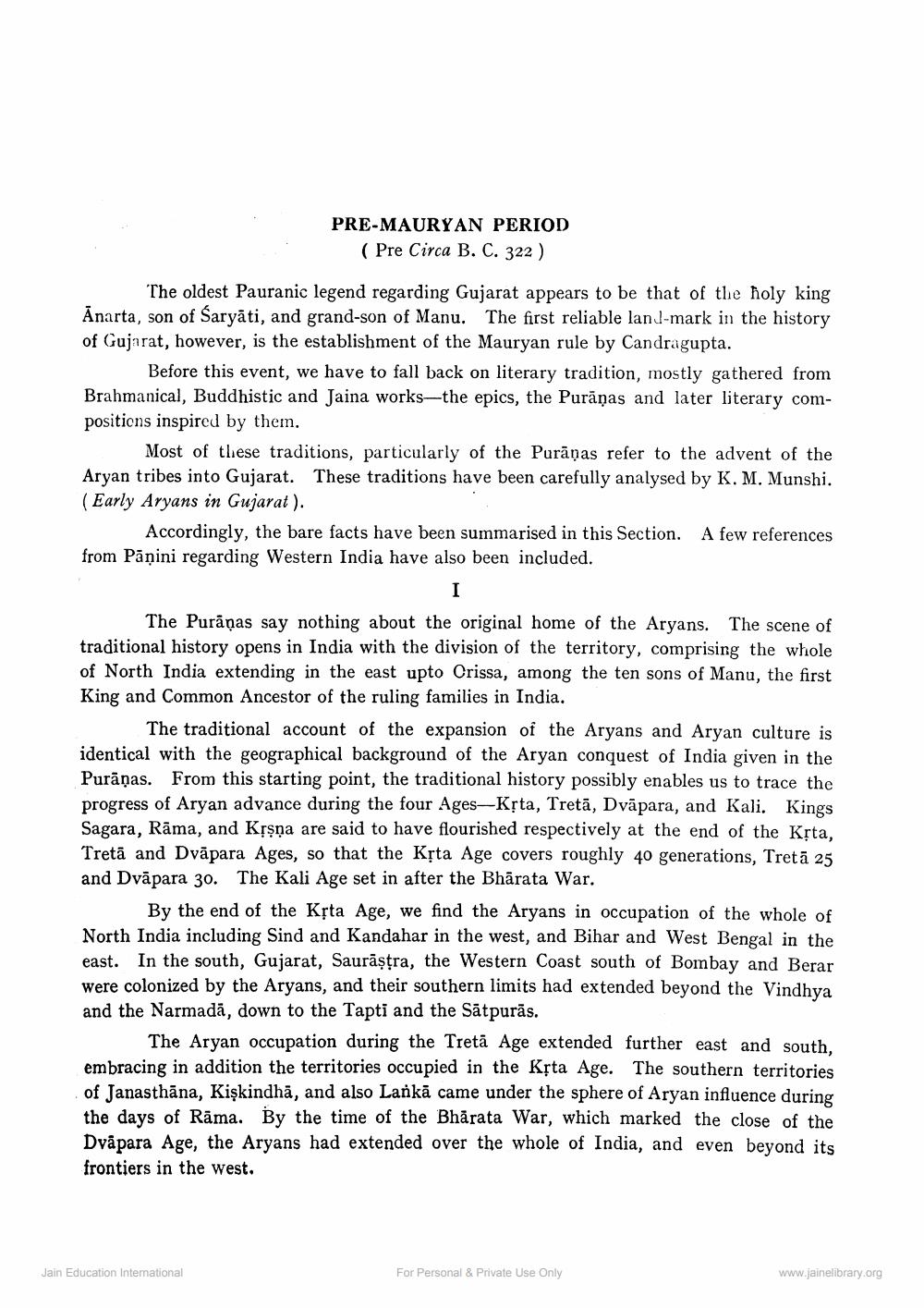________________
PRE-MAURYAN PERIOD
(Pre Circa B. C. 322 )
The oldest Pauranic legend regarding Gujarat appears to be that of the holy king Ānarta, son of Saryāti, and grand-son of Manu. The first reliable land-mark in the history of Gujarat, however, is the establishment of the Mauryan rule by Candragupta.
Before this event, we have to fall back on literary tradition, mostly gathered from Brahmanical, Buddhistic and Jaina works—the epics, the Purāṇas and later literary compositions inspired by them.
Most of these traditions, particularly of the Purāṇas refer to the advent of the Aryan tribes into Gujarat. These traditions have been carefully analysed by K. M. Munshi. (Early Aryans in Gujarat ).
Accordingly, the bare facts have been summarised in this section. A few references from Pāṇini regarding Western India have also been included.
I The Purāņas say nothing about the original home of the Aryans. The scene of traditional history opens in India with the division of the territory, comprising the whole of North India extending in the east upto Orissa, among the ten sons of Manu, the first King and Common Ancestor of the ruling families in India.
The traditional account of the expansion of the Aryans and Aryan culture is identical with the geographical background of the Aryan conquest of India given in the Purāṇas. From this starting point, the traditional history possibly enables us to trace the progress of Aryan advance during the four Ages-Kộta, Tretā, Dvāpara, and Kali. Kings Sagara, Rāma, and Kțşņa are said to have flourished respectively at the end of the Krta, Tretā and Dvāpara Ages, so that the Kộta Age covers roughly 40 generations, Tretā 25 and Dvāpara 30. The Kali Age set in after the Bhārata War.
By the end of the Kșta Age, we find the Aryans in occupation of the whole of North India including Sind and Kandahar in the west, and Bihar and West Bengal in the east. In the south, Gujarat, Saurāṣtra, the Western Coast south of Bombay and Berar were colonized by the Aryans, and their southern limits had extended beyond the Vindhya and the Narmadā, down to the Tapti and the Sātpurās.
The Aryan occupation during the Tretā Age extended further east and south, embracing in addition the territories occupied in the Krta Age. The southern territories of Janasthāna, Kişkindha, and also Lankā came under the sphere of Aryan influence during the days of Rāma. By the time of the Bhārata War, which marked the close of the Dvåpara Age, the Aryans had extended over the whole of India, and even beyond its frontiers in the west.
Jain Education International
For Personal & Private Use Only
www.jainelibrary.org




